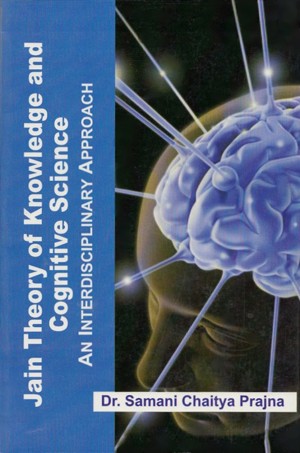Sight is probably the most developed sense in humans, followed closely by hearing. Thus it is known as most paṭu (efficient) in the Jain text called Nandi Vṛtti.[26]

Fig. No 2.5: Structure of an Eye
The eye is the organ of vision. As explained in the anatomy of it has a complex structure consisting of a transparent lens that focuses light on the retina. The retina is covered with two basic types of light-sensitive cells-rods and cones. The cone cells are sensitive to color and are located in the part of the retina called the fovea, where the light is focused by the lens. The rod cells are not sensitive to color, but have greater sensitivity to light than the cone cells. These cells are located around the fovea and are responsible for peripheral vision and night vision. The eye is connected to the brain through the optic nerve. The point of this connection is called the 'blind spot' because it is insensitive to light.[27]
According to Jainism the structure of the eye; retina, cornea, lens, rods and cones is nivṛtti, whereas the ability of lens to reflect object is known as upakaraṇa.
Experiments have shown that the back of the brain maps the visual input from the eyes. The brain combines the input of our two eyes into a single three-dimensional image. In addition, even though the image on the retina is upside-down because of the focusing action of the lens, the brain compensates and provides the right side-up perception.[28]
The range of perception of the eye is phenomenal. In the dark, a substance produced by the rod cells increases the sensitivity of the eye so that it is possible to detect very dim light. In strong light, the iris contracts reducing the size of the aperture that admits light into the eye and a protective obscure substance reduces the exposure of the light-sensitive cells. The spectrum of light to which the eye is sensitive varies from the red to the violet. Lower electromagnetic frequencies in the infrared are sensed as heat, but cannot be seen. Higher frequencies in the ultraviolet and beyond cannot be seen either, but can be sensed as tingling of the skin or eyes depending on the frequency. The human eye is not sensitive to the polarization of light, i.e., light that oscillates on a specific plane. Bees, on the other hand, are sensitive to polarized light, and have a visual range that extends into the ultraviolet. Some kinds of snakes have special infrared sensors that-enable them to hunt in absolute darkness using only the heat emitted by their prey. Birds have a higher density of light-sensing cells than humans do in their retinas, and therefore, higher visual acuity.[29]
According to Jain canons, The sense of seeing can perceive an object minimum from the distance of an innumerate part of a finger and maximum from the distance of a bit more than one lac yojana (Yojana=8000 miles) but there should be no hindrance in between. A person makes a form higher than one lac yojana with his power of transformation. Such a person can see even below his feet. Perhaps the term 'a bit more than one lac yojana' has been used due to this reason. [30] It has been said in the scripture and Nandi Vṛtti[31] that the term 'a bit more than one lac yojana' should be taken into consideration from the point of view of the objects that are not radiant. Radiant objects can be seen from even greater distance. According to Viśeṣāvaśyaka Bhāṣya, if the object is luminous such as sun, it can be seen the object situated bit more than twenty-one lac yojanas[32]
 Samani Chaitya Pragya
Samani Chaitya Pragya

